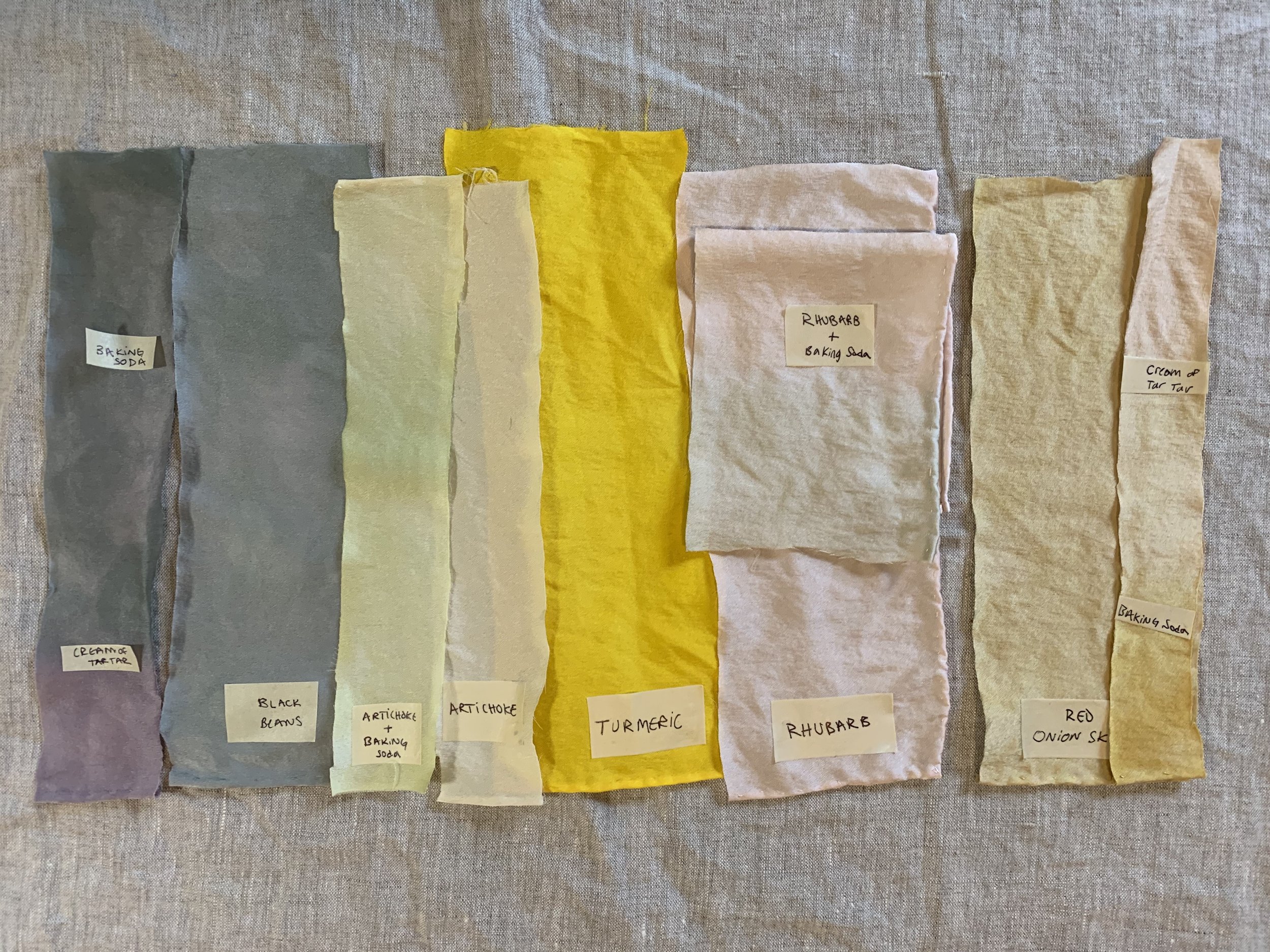Apprvl NYC specializes in chainstitch embroidery and handmade goods. Based in Brooklyn, Apprvl offers both on site custom embroidery events and production embroidery.

Apprvl NYC specializes in chainstitch embroidery and handmade goods. Based in Brooklyn, Apprvl offers both on site custom embroidery events and production embroidery.

Food Waste/Natural Dyes
Supplies
-1 pot per color/dye you are using (stainless steel or porcelain lined are best, iron pots will change some of the dyes colors)
-Something to stir and remove your fabrics
-Rubber bands, hair ties, string, clothespins, whatever you have to bind up your fabrics
Dyes:
Feel free to just use whatever food waste you have, no need to get all of these ingredients, you can choose just one or a few!
-Avocado pits and skins (clean off all the avocado fruit)
-Red onion skins ( you can also try yellow onion skins!)
-Turmeric powder
-Black Beans - if you choose to work with black beans, soak a can of black beans in 4 cans worth of water overnight
Mordants:
you can use either, this is what we will soak our fabrics in the night before dying. You can do it morning of as well, but I prefer to let the fabrics sit in the mordant for around 12 hours
-Vinegar
-Alum - you may be able to find this at the grocery store in the spice isle, here is an image for reference of what to keep an eye out for! You can also find this at local craft stores.
Color changers (optional for fun)
Citrus, Salt, Cream of tartar, Rusty nails
Fabrics/fiber contents:
Natural Fibers will be best, synthetic fibers will reject the dyes!
Cotton, Linen, Silk, Wool
How to Mordant:
Vinegar
when using vinegar, you want to create a mordant bath of 1 part Vinegar, 4 parts water
Let your fabrics sit overnight, with this method you do not need to rinse out the vinegar water before dying
Alum
heat a pot of water with enough water for your fabrics to sit in this not squished together, you should be able to stir the fabrics around easily
Depending on how much fabrics you are dying, you can add in the whole container of alum (referring to the image size above) if you are doing multiple pieces (ie. 4 shirts) if you are doing a few dish towels you can use half of the container
Let your pot sit on medium heat, not boiling for about an hour. Let the pieces sit in this mixture overnight to cool.
**If you are using a new item that has never been washed before, give it a rinse with some gentle detergent or baking soda to remove any finishes**
General Dying Instructions:
1. Fill your pot about 2/3 full and heat on high, add your dye elements( avocado pits or skins, onion skins, black bean water, etc) bring to a boil.
2. Lower your heat to a simmer, some dye elements need longer to extract the dye, I usually wait about 2 hours for maximum color extraction.
3. Strain your dye, or keep it in the pot! I like to keep my dye elements in the pot because I prefer a more uneven dye.
4. Add your wet fabric into the dye pot and simmer for 30 minutes - 2 hours *fabric needs to be fully saturated before putting into the dye bath otherwise your dye may not soak fully into your fabrics and will dye un-evenly and wash off easily
5. Check to see how your colors saturation is coming along. The color will dry lighter than how it looks wet.
Color Changer Options:
After your fabrics are dyed, you can experiment with color changers, also found in your pantry! Not all color changers work on all dyes, but fun to try!
-Baking Soda is a base, so it adjusts the PH of water to be more alkaline. Certain dyes react differently to baking soda, but generally creates a more vibrant hue!
-Cream of Tar Tar is an acid, its PH number is 5 so its not too strong, but in my experience it adjusts colors to be softer and more peachy.
-Citrus and/or Citric Acid - are acidic and have a lower PH level of 2-3 and will be more of a bleaching agent. This can be fun to sprinkle on a dyed piece and see what kind of splatter effect you may get!